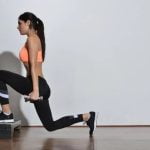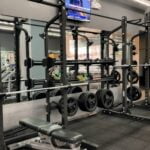Are you looking to take your fitness to the next level? Understanding the importance of fitness increasing exercises is crucial for achieving your strength and endurance goals. By incorporating effective workouts into your routine, you can increase your overall fitness and performance. Whether you’re a beginner or a seasoned athlete, these exercises are essential for reaching new levels of physical ability.
Understanding the principles of progressive overload is key to maximizing the benefits of your workout routine. This concept involves gradually increasing the intensity, duration, or frequency of your exercises to continually challenge your body. By doing so, you can avoid plateaus and continue making progress in your fitness journey. Incorporating these principles into your fitness routine can lead to significant improvements in strength, endurance, and overall physical performance.
In this article, we will explore the top 10 fitness increasing exercises for building both strength and endurance. Additionally, we will delve into the benefits of resistance training for muscles and bone health, as well as how to incorporate high-intensity interval training (HIIT) for maximum results. We will also discuss the importance of flexibility and mobility exercises for overall fitness and provide nutrition tips to support your exercise routine.
Lastly, we will touch on tracking progress, avoiding common mistakes and injuries, finding motivation, and setting realistic goals. So let’s get started on our journey towards increased fitness.
Understanding the Principles of Progressive Overload
Progressive overload is a fundamental principle in any fitness increasing exercise routine. It involves gradually increasing the intensity, duration, or frequency of your workouts to continually challenge your body and stimulate further improvements in strength, endurance, and overall fitness. Without progressive overload, your body would eventually adapt to your current exercise routine and you may experience a plateau in your results.
One way to apply progressive overload is by increasing the amount of weight you lift in resistance training exercises. For example, if you have been performing bicep curls with 10-pound dumbbells for several weeks and find it relatively easy, it may be time to increase the weight to 12 or 15 pounds. This added resistance will force your muscles to work harder, leading to increased strength and muscle growth over time.
Another method of applying progressive overload is by increasing the number of repetitions or sets for a particular exercise. If you have been consistently performing 3 sets of 10 reps for squats, try adding an extra set or two, or increasing the number of reps per set. This variation in volume can help push past plateaus and stimulate further muscle development.
In addition to adding more weight or volume to your workouts, adjusting rest times between sets, varying exercise tempo, and incorporating more challenging variations of exercises are also effective ways to apply progressive overload in your fitness increasing exercises routine.
| Principle Application | Examples |
|---|---|
| Increasing Weight | Bicep curls with heavier dumbbells |
| Increasing Volume | Adding an extra set for squats or increasing reps per set |
| Varying Exercise Variations | Performing more challenging variations of exercises |
Top 10 Fitness Increasing Exercises for Strength and Endurance
When it comes to increasing fitness levels, incorporating the right exercises into your routine is essential for developing strength and endurance. Here are ten effective fitness increasing exercises that you can add to your workout regimen:
- Squats: This compound exercise targets multiple muscle groups, including the quadriceps, hamstrings, glutes, and core, making it a great choice for building lower body strength.
- Deadlifts: Deadlifts are excellent for strengthening the posterior chain, including the lower back, glutes, and hamstrings. Proper form is crucial for maximizing the benefits and preventing injury.
- Push-ups: A classic bodyweight exercise that engages the chest, shoulders, triceps, and core. It can be modified to match different fitness levels.
- Pull-ups: This challenging exercise targets the muscles in the back and arms while also engaging the core for stability. Resistance bands can be used for assistance if needed.
- Lunges: Lunges are effective for improving lower body strength and balance. They also help to correct muscle imbalances between each leg.
In addition to these compound movements, incorporating cardiovascular exercises is crucial for building endurance. Here are a few examples of cardio-based fitness increasing exercises:
- Running or jogging
- Cycling
- Rowing
By adding a combination of strength training and cardiovascular exercises to your fitness routine, you can effectively improve both strength and endurance while promoting overall health and wellness.
Remember to consult with a fitness professional or personal trainer before starting any new exercise program to ensure proper form and technique while performing these exercises.
How to Incorporate High Intensity Interval Training (HIIT) Into Your Routine
High Intensity Interval Training, or HIIT, is a popular and effective form of exercise that can be incorporated into your fitness routine to increase overall fitness levels. This type of training involves short bursts of intense exercise followed by periods of rest or lower intensity activity. The key to HIIT is pushing yourself to your maximum effort during the high intensity intervals, which can effectively improve cardiovascular health, endurance, and calorie burning.
Benefits of HIIT
One of the main benefits of incorporating HIIT into your fitness routine is its efficiency. With shorter bursts of high intensity exercise, you can achieve the same if not better results compared to longer periods of moderate intensity exercise. Additionally, HIIT has been shown to improve oxygen consumption, lower resting heart rate, and increase metabolic rate, all contributing to improved overall fitness levels.
Adding HIIT to Your Routine
To incorporate HIIT into your workout regimen, consider adding it to any form of cardio exercise such as running, cycling, or swimming. Begin with a 1:2 work-to-rest ratio and gradually increase the intensity by decreasing the rest time or increasing the work time as your fitness level improves.
It’s important to listen to your body and not overexert yourself when first starting out with HIIT. Gradually build up your stamina and endurance before pushing yourself too hard in order to prevent injury.
Incorporating High Intensity Interval Training into your routine can be a great way to challenge yourself and take your fitness level to new heights. With its numerous benefits and adaptability to various forms of exercise, including HIIT in your routine can help you reach new levels of strength and endurance while keeping you engaged and motivated in your fitness journey.
The Benefits of Resistance Training for Muscles and Bone Health
Resistance training, also known as strength training, is an essential component of any fitness increasing exercise routine. This type of workout involves using resistance, such as weights or resistance bands, to work and strengthen the muscles. In addition to building muscle strength and endurance, resistance training provides numerous benefits for overall health, particularly for muscles and bone health.
One of the primary benefits of resistance training is its ability to increase muscle mass and strength. As we age, we naturally lose muscle mass, which can lead to decreased strength and mobility. Engaging in regular resistance training exercises helps to counteract this natural decline by stimulating muscle growth and improving muscular strength and endurance. Strong muscles are important for performing daily activities and maintaining good posture, balance, and coordination.
Furthermore, engaging in resistance training exercises can have a positive impact on bone health. By putting stress on the bones through weight-bearing exercises like squats or deadlifts, resistance training can help increase bone density and reduce the risk of osteoporosis. This is especially important for women, who are more prone to developing osteoporosis as they age. Incorporating resistance training into your fitness routine can help build stronger bones and maintain overall bone health.
Incorporating resistance training into your fitness routine not only improves muscle strength and enhances bone health but also provides a myriad of other benefits for overall wellness. By engaging in regular resistance workouts, individuals can improve their metabolism, enhance their physical appearance, boost their confidence levels, reduce their risk of chronic diseases such as heart disease and diabetes, as well as promote better mental wellbeing.
Incorporating Flexibility and Mobility Exercises for Overall Fitness
Flexibility and mobility exercises are often overlooked when it comes to fitness increasing routines, but they are essential for overall health and wellbeing. These exercises help improve range of motion, reduce the risk of injury, and enhance athletic performance. By incorporating flexibility and mobility exercises into your routine, you can increase the effectiveness of your workouts and experience greater overall fitness.
One of the key benefits of flexibility and mobility exercises is their ability to improve athletic performance. When your muscles are more flexible, you can move more efficiently and effectively during physical activities such as running, lifting weights, or playing sports. This can lead to better performance outcomes and reduced risk of injury. Additionally, improved flexibility can also aid in muscle recovery post-workout, allowing you to bounce back faster after intense exercise sessions.
Some examples of flexibility and mobility exercises include yoga, Pilates, stretching routines, foam rolling, and dynamic warm-up exercises. These activities not only help increase flexibility but also promote better joint health and mobility. By including these exercises in your routine, you can ensure that your body is prepared for the demands of your fitness increasing exercises while minimizing the risk of strains or injuries.
Incorporating flexibility and mobility exercises into your overall fitness routine is vital for achieving a balanced approach to health. While strength training and cardiovascular exercise are important for building muscle and endurance, neglecting flexibility can lead to imbalances in the body. By including a variety of different workouts that focus on flexibility and mobility, you can achieve a well-rounded fitness regimen that promotes overall wellness.
| Flexibility Exercise | Mobility Exercise |
|---|---|
| Yoga | Dynamic warm-up exercises |
| Pilates | Foam Rolling |
| Stretching routines |
Nutrition Tips for Supporting Your Fitness Increasing Exercise Routine
When it comes to increasing fitness levels, exercise alone is not enough. Proper nutrition plays a crucial role in supporting your fitness increasing exercises and ensuring that you have the energy and nutrients needed for optimal performance and recovery. In this section, we will explore some essential nutrition tips to help you get the most out of your workout routine.
Hydration
Staying well-hydrated is key to maximizing the benefits of your fitness increasing exercises. Water is essential for regulating body temperature, lubricating joints, and transporting nutrients throughout the body. It is recommended to drink plenty of water before, during, and after your workouts to maintain optimal hydration levels.
Macronutrient Balance
Incorporating a balance of carbohydrates, proteins, and healthy fats into your diet is important for fueling workouts and supporting muscle recovery. Carbohydrates provide energy for high-intensity exercises, while protein is essential for muscle repair and growth. Healthy fats are important for overall health and can also provide a source of sustained energy.
Pre-Workout Fuel
Eating a balanced meal or snack containing carbohydrates and protein before your workout can help maximize performance and prevent muscle breakdown. Foods such as whole grain toast with peanut butter, Greek yogurt with fruit, or a banana with almond butter are great options for pre-workout fuel.
By following these nutrition tips and making sure you are properly fueled, you can effectively support your fitness increasing exercises and optimize your results. Remember that everyone’s nutritional needs are different, so it’s important to listen to your body and adjust your diet as needed based on how you feel during workouts and throughout the day.
Tracking Your Progress and Setting Realistic Goals
Setting realistic fitness goals and tracking your progress is essential for maintaining motivation and seeing results. Here are some tips for tracking your progress and setting achievable goals:
- Keep a workout journal or use a fitness app to record your workouts, including the exercises, sets, reps, and weights used. This will allow you to track your progress over time and make adjustments to your fitness increasing exercises as needed.
- Take regular measurements of your body, such as weight, body fat percentage, and measurements of specific areas like waist circumference or muscle size. Seeing tangible results can help keep you motivated and on track with your fitness goals.
- Set specific, measurable, achievable, relevant, and time-bound (SMART) goals for your fitness increasing exercises. For example, a goal could be to increase the number of push-ups you can do in one minute by 20% in the next month.
- Celebrate small victories along the way to reaching your larger fitness goals. Whether it’s achieving a new personal best in a particular exercise or consistently sticking to your workout routine for a certain period of time, acknowledging these accomplishments can help keep you motivated.
5.Track not only physical changes but also improvements in strength, endurance, flexibility, and overall performance during workouts. This will give you a holistic view of your progress beyond just aesthetics.
By diligently tracking your progress and setting realistic goals for yourself in line with the principles of progressive overload, you’ll be able to stay committed to your fitness increasing exercises and continue making strides towards improved strength and endurance.
Avoiding Common Mistakes and Injuries in Fitness Increasing Exercises
When it comes to fitness increasing exercises, it is important to not only focus on pushing your limits, but also to prioritize safety and injury prevention. Understanding common mistakes and knowing how to avoid them can help you stay on track with your fitness goals while minimizing the risk of injuries.
One common mistake when incorporating fitness increasing exercises is neglecting proper warm-up and cool-down routines. Failing to adequately prepare your body for exercise can lead to muscle strains and other injuries. It is crucial to take the time to properly warm up your muscles before engaging in any high-intensity workout. Similarly, cooling down after a workout can help prevent muscle stiffness and reduce the risk of injury.
Another mistake that individuals often make is improper form during exercises. Whether it’s lifting weights, performing bodyweight exercises, or engaging in cardiovascular activities, using incorrect form can lead to strains, sprains, and even more serious injuries. Taking the time to learn the proper technique for each exercise and paying attention to form throughout your workouts is essential for preventing exercise-related injuries.
Lastly, overtraining can be a major pitfall when aiming for fitness increasing exercises. While consistency is important for progress, overdoing it can result in burnout and increased risk of injury. It’s crucial to allow for adequate rest and recovery between workout sessions to give your muscles time to repair and strengthen. Listening to your body’s signals of fatigue and not pushing yourself beyond your limits is key in avoiding overtraining injuries.
By being mindful of these common mistakes and taking proactive steps to prevent them, you can make great strides in achieving your fitness goals while minimizing the risk of exercise-related injuries. Always prioritize safety and listen to your body as you incorporate fitness increasing exercises into your routine.
Finding Motivation and Accountability to Stick to Your Fitness Routine
In conclusion, incorporating fitness increasing exercises into your routine is essential for achieving and maintaining a high level of physical fitness. Whether your goal is to increase strength, endurance, flexibility, or all of the above, prioritizing regular exercise can have drastic effects on your overall well-being. By understanding the principles of progressive overload and incorporating high-intensity interval training (HIIT), you can push yourself to new limits and see significant improvements in your fitness levels.
Resistance training has been proven to have numerous benefits for muscle and bone health, making it a crucial component of any fitness routine. Additionally, incorporating flexibility and mobility exercises can help improve overall function and reduce the risk of injury. Pairing these exercises with proper nutrition will provide the fuel needed to support your workouts and aid in recovery.
Setting realistic goals and tracking your progress are vital for maintaining motivation. Finding accountability through workout buddies or joining fitness communities can also provide the necessary support to stick with your routine. Lastly, be mindful of common mistakes and avoidable injuries by prioritizing proper form and listening to your body’s signals. With dedication, motivation, and a solid plan in place, you can achieve remarkable results through fitness increasing exercises.
Frequently Asked Questions
What Is the Best Exercise for Developing Fitness?
The best exercise for developing fitness is a combination of cardiovascular activities, strength training, and flexibility exercises. Cardio workouts like running, swimming, or cycling improve endurance, while strength training builds muscle and flexibility exercises maintain mobility.
What Exercises Can You Do to Increase Your Level of Fitness?
To increase your level of fitness, you can incorporate a variety of exercises into your routine. This includes cardio activities like brisk walking, jogging, or dancing to improve your endurance. In addition, strength training exercises using body weight or weights can help build muscle and increase overall fitness levels.
How Do I Increase My Fitness Level?
Increasing your fitness level involves consistency and progression in your workout routine. Gradually increasing the intensity or duration of your workouts over time can help improve cardiovascular endurance and muscle strength. Also, incorporating different types of exercise such as aerobic, resistance training, and flexibility work will contribute to overall fitness improvement.

Passionate about providing useful information to anyone with an interest in the field of Personal Training, I strive to pass on to our readers quality information and to answer any questions about Personal Trainers, the work they do and how to become one.





